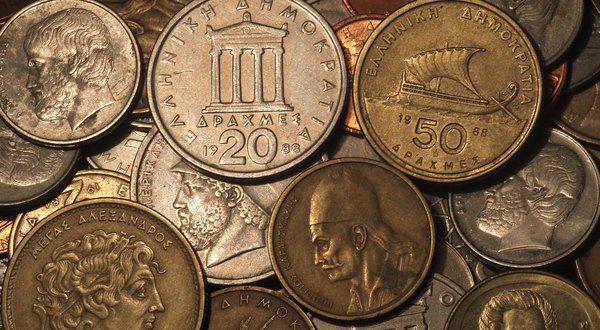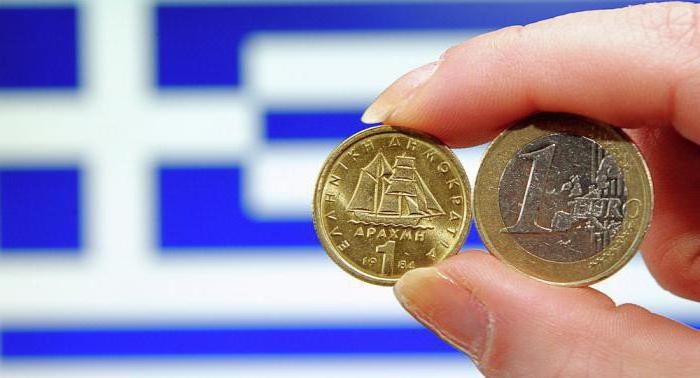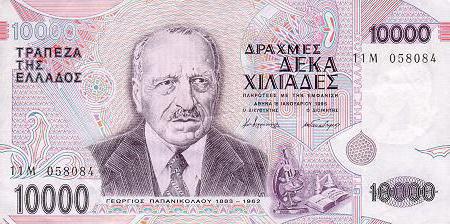Now in Greece, the euro is in use, but before its appearance in the country for many centuries, the national currency was drachma. Its history dates back to the V century BC. e. Drachma is considered one of the oldest currencies in the world and the most durable. It was the national currency of Greece before the euro. It will be discussed in our article.
Where did the name of the Greek currency come from - drachmas?
The name of the Greek currency appeared for the first time in the 5th century BC. It was called Drachma for a reason. At that time, iron tetrahedral silver and gold twigs - “obol” were taken for money. A handful of six of them were called “drachma”. Translated from the local language, this means “handful” or “palm”. Therefore, the national currency received its name. A small change was a mite.
History of drachma
For the first time, Greek drachma appeared as a national currency during the Hellenistic period. The first money in the form of handfuls of metal rods was used from 1100 BC. Mostly drachma was made of silver, rarely - of gold.
Each city of Ancient Greece had its own currency name (Babylonian drachma, Phoenician, etc.). Exchange units were:
- dodecadrachm, which equaled 12 drachmas;
- decadrachm (10);
- octadrachm (8);
- pentadrachm (5);
- tetradrachm (4);
- tridrachma (3);
- didrachma (2).
There are three periods when the currency was modified:
- Ancient Greek At that time in everyday life (2000 years ago) there were silver coins.
- Hellenistic. The currency of Greece was used as the main monetary unit by various states.
- Modern. Drachma acquired a new design and face value in the 19th century.
Thanks to the conquests of A. Macedonian drachma spread in the Arab countries, received the name "dirchm". During the Roman Empire, drachma was replaced by denarius, then solid appeared. In the 15th century, after the capture of Greece by the Ottoman Empire, Turkish piastre appeared in use. In 1828, after the liberation of the country, a new currency appeared - the Phoenix. But according to the royal decree of Otton, she was replaced with the previous drachma. It was the national currency of the country until 2001, then it was replaced by the euro.
Design and safety drachma
In a short time, the former national currency of Greece has undergone many modifications. Coin design is associated with legends and myths. On the front side, the nominal value was indicated. The inscriptions were all written strictly in Greek.
We should also pay attention to the color scheme. Artists, developing the design of the currency, were able to unusually combine different colors and their shades. Thanks to this, the design of Greek banknotes gained originality and uniqueness. On the back of the banknotes, the depicted sights and cultural values were decorated in antique style. All modifications, thanks to which the drachma was modified, have led to the fact that it has become almost impossible to counterfeit coins and banknotes.
Currency of Greece: ancient coins and banknotes
On the coins in the 5th century, the profiles of the goddess Athena and her symbol, the owl, were minted. When Greece entered the Byzantine Empire, solid was the main gold coin. In 1204, a cross was minted on the front of the drachma.
As the modern Greek national currency, silver drachma was introduced into circulation in 1833. During the German occupation, new coins were minted. They went into circulation in 1944. The new drachma was exchanged for 50 billion old ones. Inflation continued until May 1954. After which the new drachma was equal to a thousand old.
The currency of Greece consisted not only of coins, they also issued it in banknotes. The first paper drachmas appeared in the 19th century.The Greek government decided to issue banknotes due to a shortage of precious metals for minting coins. The first banknotes appeared in denominations of five to a hundred phoenixes.
During World War II, banknotes were printed in denominations of tens of billions of drams. In 1944, new notes were issued in an attempt to escape inflation, but this did not help. And only in 1955, after the release of new notes, did inflation stop. Modern drachma banknotes were printed until January 2001. It was the national currency of Greece before the euro. Before switching to the euro, banknotes in denominations of 50 to 10,000 drams were in use in the country. On the largest banknote was printed the image of the Greek scientist George Papanicolaou.
Features of Greek coins
A feature of Greek coins was a unique design. Its author was Georgios Stamatopolus. The currency of Greece had the following images:
- 5th century Athenian thyrema;
- 19th century corvette;
- modern tanker;
- the scene of Zeus abducting Europe;
- Rigas Fereos;
- John Kapodistrias;
- Eleftherios Venizelos (famous politician).
200 dram banknote history
A banknote of 200 drams has its own separate story. For all years of issuing banknotes, it was printed only once, in 1996. On the obverse was depicted the national hero of Greece, Rigas Feraios.
What currency to take to Greece: tourist guide
Now in the country, the payment currency is the euro, since Greece is part of the European Union. Paying in this country with these notes. There are banknotes of different denominations - from 5 to 500 euros; coins - from 1 to 50 cents and one and two euros. When withdrawing money, uniform tariffs apply for countries that are members of the European Union.
Greek banks open from 8 a.m. and close at 14.30. You can exchange the currency brought with you at any exchange point. The commission will be up to 2 percent. The euro is constantly fluctuating, so the exact amount of the exchange cannot be determined in advance.
Small money will be required to avoid surrender problems. It should be remembered that banknotes in denominations of 100 and 200 euros often turn out to be fake, so it is better to hedge the exchange for smaller ones.
In hotels and supermarkets you can pay by credit card (visa, mastercard, maestro) or in cash. For settlements in restaurants and cafes, it is best to exchange large banknotes for small ones in advance.
If you want to wander around the shops, then you need to know that absolutely all of their owners have "problems" with the change. It is calculated that tourists will not take change. This practice exists not only in Greece, but also in Turkey, Egypt and some other resort countries.